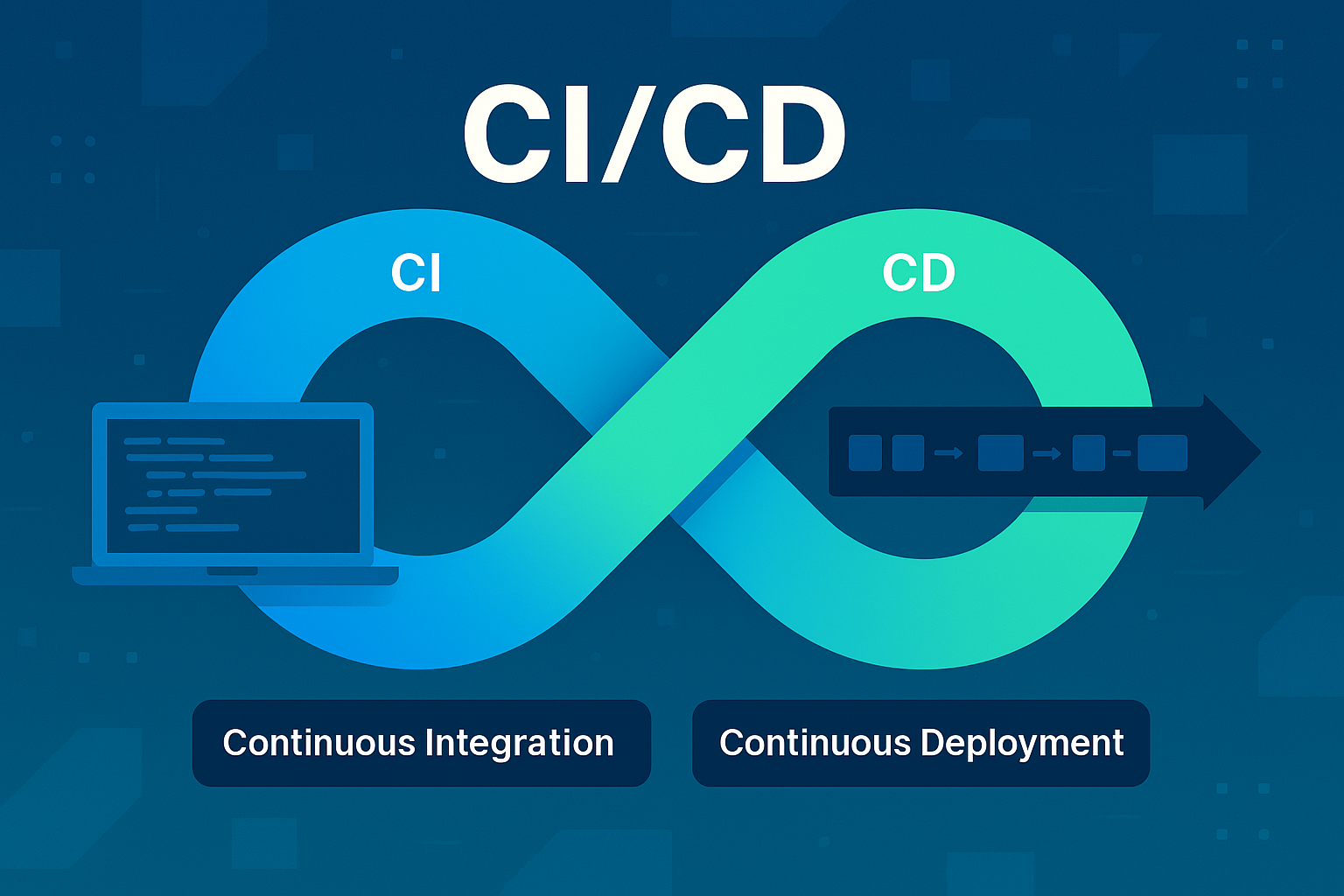CI/CD: How to Implement and What Are the Benefits
 Binshad
Binshad
Introduction
Continuous Integration and Continuous Deployment (CI/CD) have become essential practices in modern software development. They help automate the software delivery process, reduce human errors, and ensure faster deployment cycles. This article will provide a step-by-step guide to implementing CI/CD, its benefits, and why every development team should adopt it.
What is CI/CD?
CI/CD is a combination of continuous integration (CI) and continuous deployment (CD). These practices streamline software development by automating the build, testing, and deployment processes.
Continuous Integration (CI)
CI is the practice of frequently merging code changes into a shared repository. Automated tests run every time new code is committed, ensuring that the new changes do not break the existing functionality.
Continuous Deployment (CD)
CD takes CI a step further by automatically deploying the successfully tested code to production. This minimizes manual intervention and speeds up the software release cycle.
How to Implement CI/CD
Step 1: Choose a Version Control System (VCS)
Use Git-based repositories like GitHub, GitLab, or Bitbucket.
Ensure a proper branching strategy (e.g., Git Flow, Feature Branching).
Step 2: Select a CI/CD Tool
Popular CI/CD tools include:
Jenkins (Open-source, highly customizable)
GitHub Actions (Built into GitHub)
GitLab CI/CD (Integrated with GitLab)
CircleCI (Fast and cloud-based)
Travis CI (Good for open-source projects)
Step 3: Configure the CI/CD Pipeline
A typical CI/CD pipeline consists of the following stages:
Code Commit: Developers push code to a repository.
Build: The code is compiled, and dependencies are resolved.
Test: Automated tests (unit, integration, functional) are executed.
Deploy: The application is deployed to staging and/or production.
Monitor: Logs and metrics are analyzed for performance and errors.
Step 4: Write CI/CD Configuration File
Most CI/CD tools require a configuration file:
Jenkinsfile (Jenkins)
.github/workflows (GitHub Actions)
.gitlab-ci.yml (GitLab CI/CD)
Example GitHub Actions YAML file:
name: CI/CD Pipeline
on:
push:
branches:
- main
pull_request:
branches:
- main
jobs:
build:
runs-on: ubuntu-latest
steps:
- name: Checkout Code
uses: actions/checkout@v2
- name: Set Up Node.js
uses: actions/setup-node@v2
with:
node-version: '14'
- name: Install Dependencies
run: npm install
- name: Run Tests
run: npm test
Step 5: Automate Deployment
Deploy to staging environments before production.
Use Kubernetes, Docker, or AWS Lambda for containerised deployments.
Implement blue-green deployments or canary releases to reduce downtime.
Benefits of CI/CD
1. Faster Time to Market
- Automates build, test, and deployment cycles, reducing release time.
2. Improved Code Quality
Early detection of bugs through automated testing.
Encourages smaller, frequent code changes instead of large, risky updates.
3. Enhanced Collaboration
Enables multiple developers to work on the same project without conflicts.
Ensures smooth integration and deployment across teams.
4. Increased Deployment Frequency
Enables multiple releases per day without manual intervention.
Reduces risk by automating rollbacks in case of failure.
5. Cost Efficiency
Reduces manual effort, saving engineering hours.
Minimises downtime with automated rollback and monitoring.
6. Better Security & Compliance
Ensures security checks and compliance rules are automatically enforced.
Reduces vulnerabilities with continuous security testing.
Conclusion
Implementing CI/CD is a game-changer for software development teams. It ensures faster releases, better software quality, and increased efficiency. By following the step-by-step implementation guide and leveraging the right tools, any team can successfully integrate CI/CD into their workflow.
Ready to take your software development to the next level? Start implementing CI/CD today!
Further Reading:
Subscribe to my newsletter
Read articles from Binshad directly inside your inbox. Subscribe to the newsletter, and don't miss out.
Written by

Binshad
Binshad
💻 Exploring the intersection of technology and finance. 📈 Sharing insights on tech dev, Ai,market trends, and innovation. 💡 Simplifying the complex world of investing